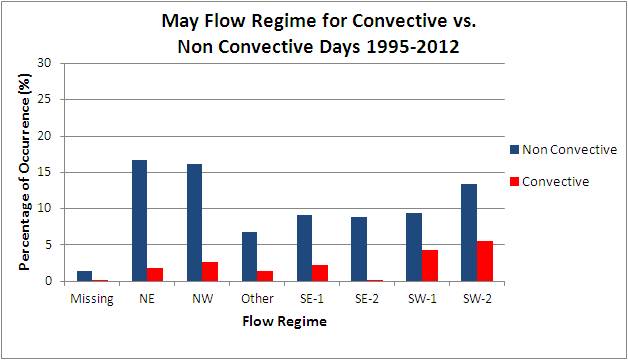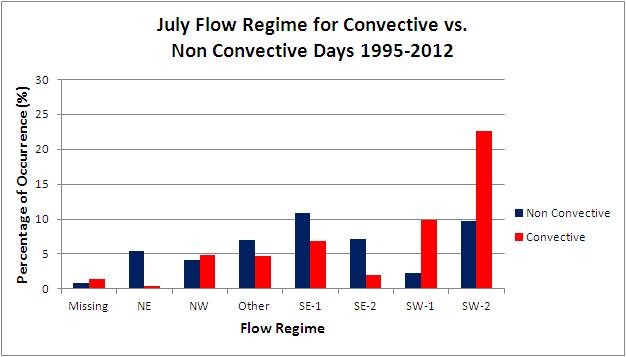
 |
Northerly component flow regimes are more prevalent during May than other warm season months, due to some frontal incursions. There are fewer days of convection than later and it is a little more likely that those days will occur during southwesterly flow regimes. | |
| Figure 5a. Convective versus non-convective days categorized by flow regimes for all warm-season days of May during the 18-year (1995-2012) span of the study. |
 |
Convective days become even more likely with southwesterly flow regimes during July. | |
| Figure 5c. Convective versus non-convective days categorized by flow regimes for all warm-season days of July during the 18-year (1995-2012) span of the study. |